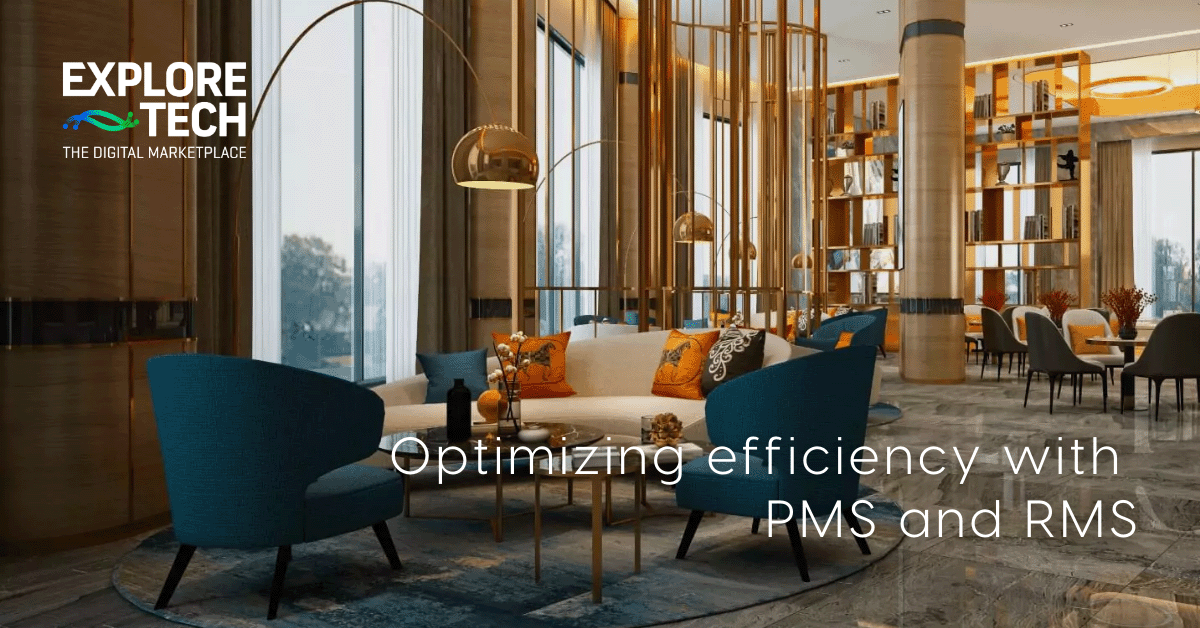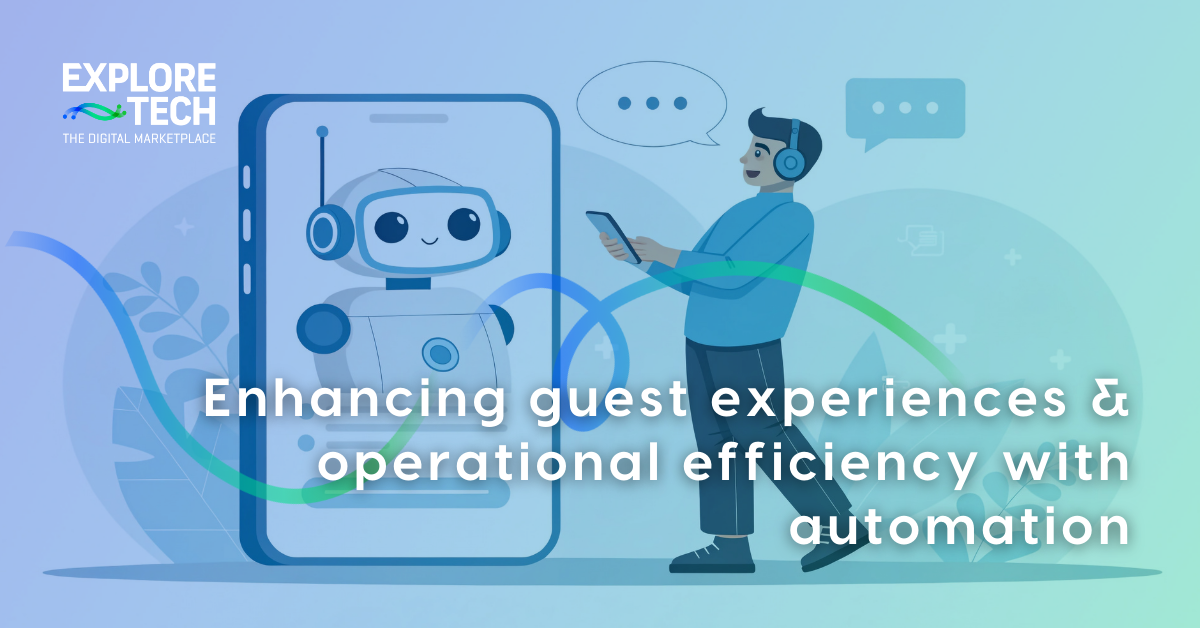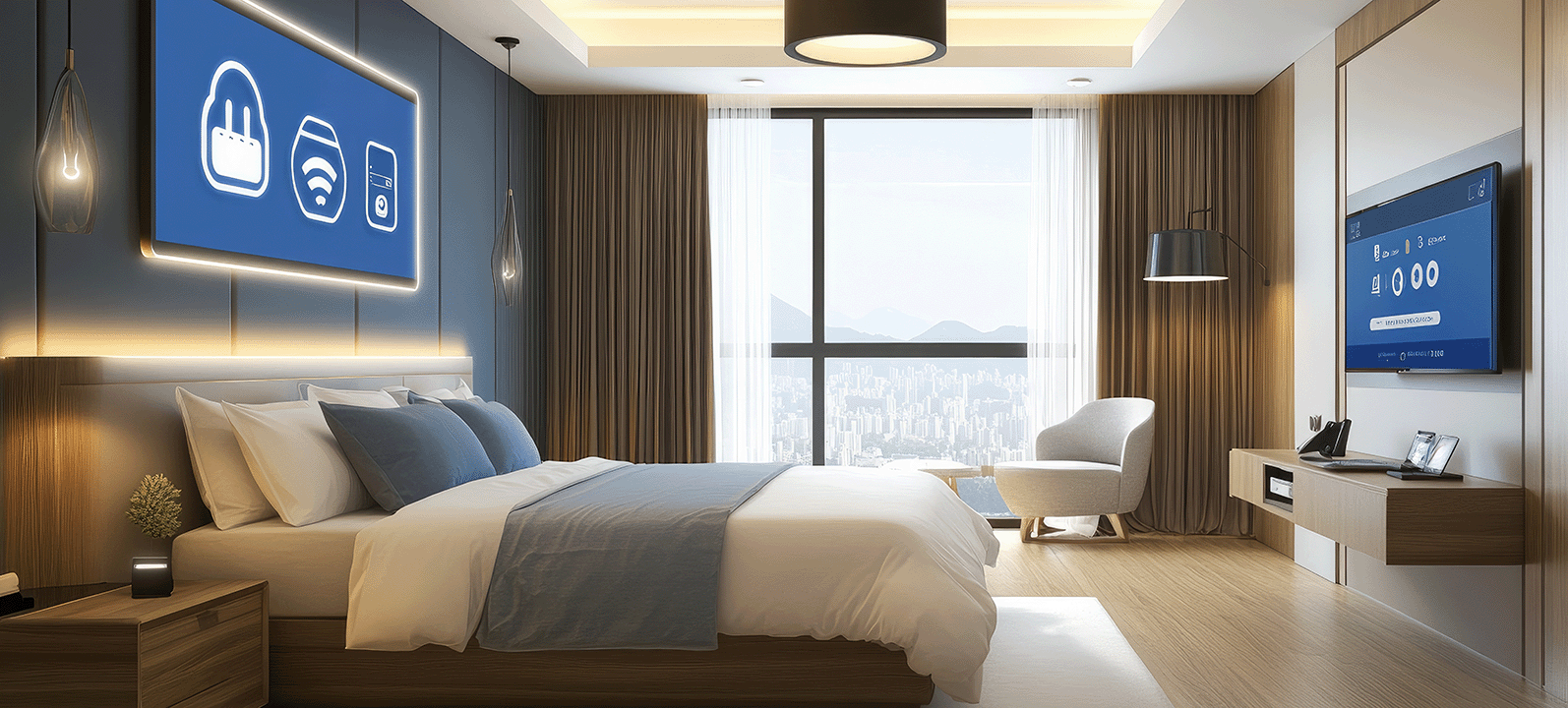
Running a successful hotel isn’t just about offering comfortable rooms or excellent service—it’s about ensuring that everything operates smoothly, from guest check-in to daily housekeeping, while also maximizing your revenue potential. As the hospitality industry becomes increasingly tech-driven, two systems are playing a bigger role than ever: Property Management Systems (PMS) and Revenue Management Systems (RMS). But what happens when these two powerful tools work together?
In this blog, we’ll dive into how combining the right PMS with revenue management tools can transform your hotel’s operations, boost efficiency, and elevate the guest experience. Let’s get into it!
Understanding the role of Property Management Systems (PMS)
At the heart of your hotel’s daily operations is the Property Management System (PMS). Think of it as the central nervous system of your hotel. It manages essential functions like guest check-ins, housekeeping, room availability, and billing—all from one platform. This system allows staff to track everything in real time, ensuring smooth operations across the board.
Modern PMS solutions, especially cloud-based ones, offer even more flexibility. They allow hoteliers to access their systems remotely, giving you the ability to monitor operations from anywhere. Whether you’re managing a small boutique hotel or a multi-location property, a good PMS ensures you’re always in control.
What about Revenue Management tools?
While a PMS keeps your hotel’s operations running smoothly, revenue management tools focus on the financial side of things. These tools analyze a range of data—from past booking trends to current market conditions—to help you make smart pricing decisions. The goal is to maximize room revenue by setting the optimal price at any given time.
Revenue management tools can dynamically adjust room rates based on demand. For example, during peak times, the system may increase prices to match high demand, while in slower periods, it might lower rates to attract more guests. This dynamic pricing strategy helps hotels boost revenue without manually tracking demand.
The power of integration: When Property Management meets Revenue Management
So, what happens when you combine these two essential systems? In short: magic. When a PMS and revenue management tools are integrated, they create a seamless flow of data that can enhance every aspect of hotel management.
Here’s why that integration is a game changer:
1. Real-time data for smarter decisions
A PMS collects critical information about guest check-ins, occupancy rates, and room availability. When this data is shared with your revenue management system, it becomes a powerful tool for smarter pricing strategies. Real-time data allows your revenue management tools to adjust prices dynamically based on what’s happening at your property right now—not just on historical trends.
Imagine your hotel’s occupancy is quickly climbing for an upcoming weekend. The PMS relays this to the revenue tool, which automatically raises rates to capitalize on the demand. Or perhaps a big group booking suddenly cancels—your integrated system can immediately lower prices to fill those vacant rooms.
2. Streamlined operations through automation
When PMS and revenue management tools work together, they can automate many tasks that would otherwise be time-consuming and prone to human error. For example, room rates can be adjusted across all channels—your website, OTAs, and other booking platforms—automatically, based on real-time occupancy data.
Not only does this save time for your team, but it also ensures that your hotel is always offering the best price to the right guest at the right time. Plus, by automating these updates, you minimize the risk of mistakes like double-bookings or inconsistent pricing.
3. Enhanced guest experience
Seamless integration between your PMS and revenue management tools doesn’t just benefit your operations; it also has a direct impact on the guest experience. Personalized service is becoming the standard in hospitality, and data sharing between these systems helps you deliver just that.
For instance, if a guest has stayed at your hotel before, your PMS will store their preferences. This information can be shared with your revenue tool to offer special deals or upgrades, creating a personalized touch that encourages repeat visits. Meanwhile, your PMS ensures that their favorite room type is available, and any special requests—like extra pillows or a late check-out—are taken care of.
4. Maximizing profitability with minimal effort
At the end of the day, every hotel wants to increase revenue while keeping costs low. Integrating a PMS with a revenue management system helps achieve this by making pricing decisions more data-driven and less manual. Instead of relying on gut instinct or outdated information, you can use real-time data to make accurate, profitable decisions.
Plus, when your revenue management tool has access to live occupancy data, it can identify key trends and opportunities to boost income—whether that’s through adjusting prices, offering last-minute deals, or managing promotions during slower periods. This combination of real-time insights and automated adjustments means you’re always maximizing your profitability with minimal effort.
The benefits of integration
Combining a PMS with revenue management tools has clear benefits. Here’s a quick summary of the advantages your hotel can expect:
Increased Efficiency: Streamline operations by automating repetitive tasks, freeing up your staff to focus on guest interactions.
Higher Revenue: Real-time pricing adjustments help maximize room rates based on demand.
Better Guest Experience: Use data to personalize offers and services, making guests feel valued and increasing the likelihood of repeat stays.
Fewer Errors: Automation reduces the risk of human error, ensuring pricing, availability, and bookings are always accurate across all platforms.
More Informed Decisions: With access to real-time data, you can make smarter, faster decisions that improve both operations and revenue.
Choosing the right hospitality technology
Not all hotel management tools are created equal. When choosing a PMS or revenue management tool, it’s important to look for systems that offer seamless integration and are built to work together. A cloud-based PMS is a smart choice, as it allows for greater flexibility and scalability.
When evaluating hospitality technology solutions, consider the following:
Ease of Use: Make sure the system is user-friendly for your team. Complex technology can slow down operations if it’s difficult to navigate.
Integration Capabilities: Look for systems that easily integrate with your existing tools and platforms.
Customer Support: Choose a provider that offers reliable, responsive customer support, so you’re never left in the dark when you need help.
Elevate your hotel’s efficiency
As the hospitality industry becomes more reliant on technology, integrating a PMS with revenue management tools is no longer a luxury—it’s a necessity. This powerful combination can streamline your operations, boost revenue, and deliver a personalized guest experience that keeps people coming back.
If you’re looking to take your hotel’s efficiency to the next level, now is the time to explore how hospitality technology can work for you. The future of hotel management is here, and it’s more efficient, profitable, and guest-centric than ever.
Ready to take the next step? Dive into ExploreTECH's extensive digital marketplace to discover the perfect PMS and RMS solutions for your hotel’s needs. Explore the best tools the industry has to offer and find the right fit for your property today!

ExploreTECH Content Team
admin


